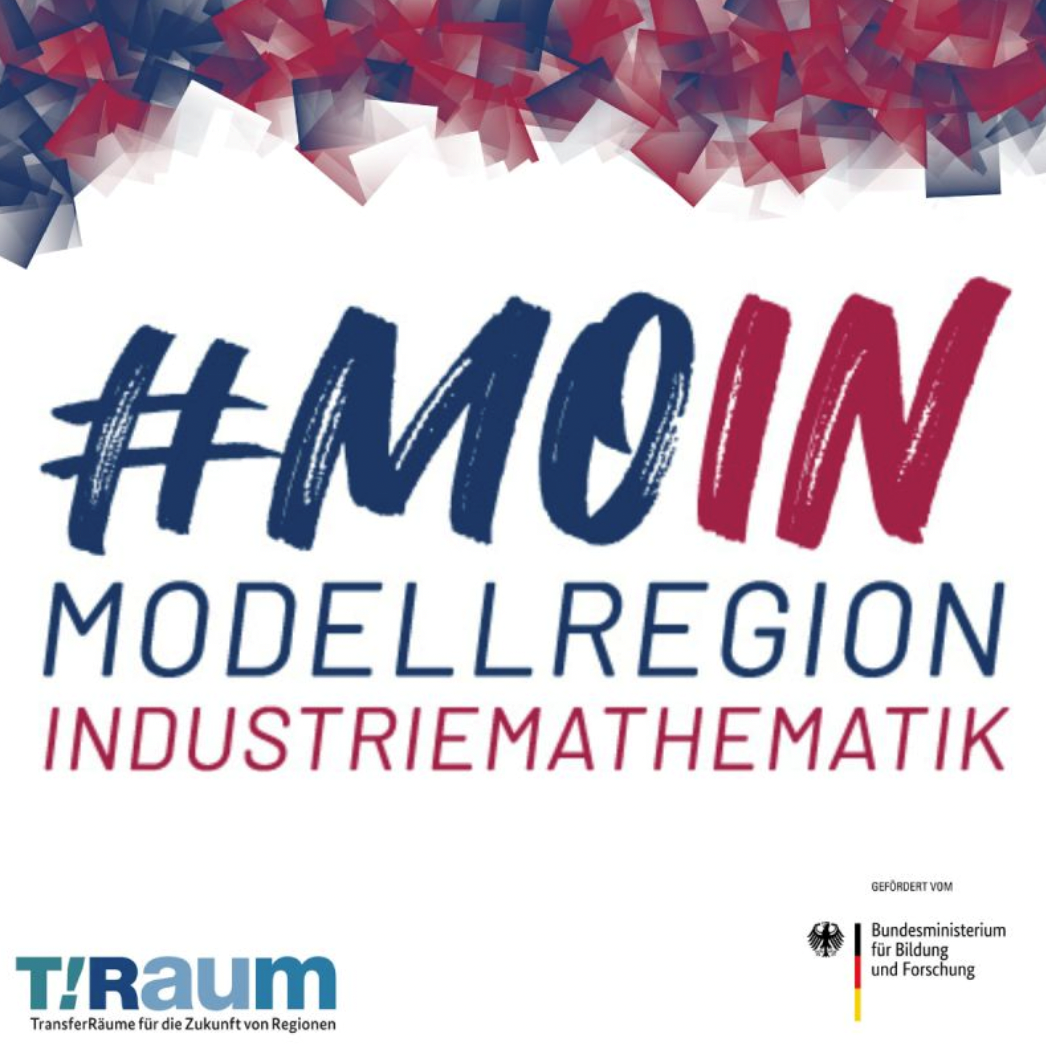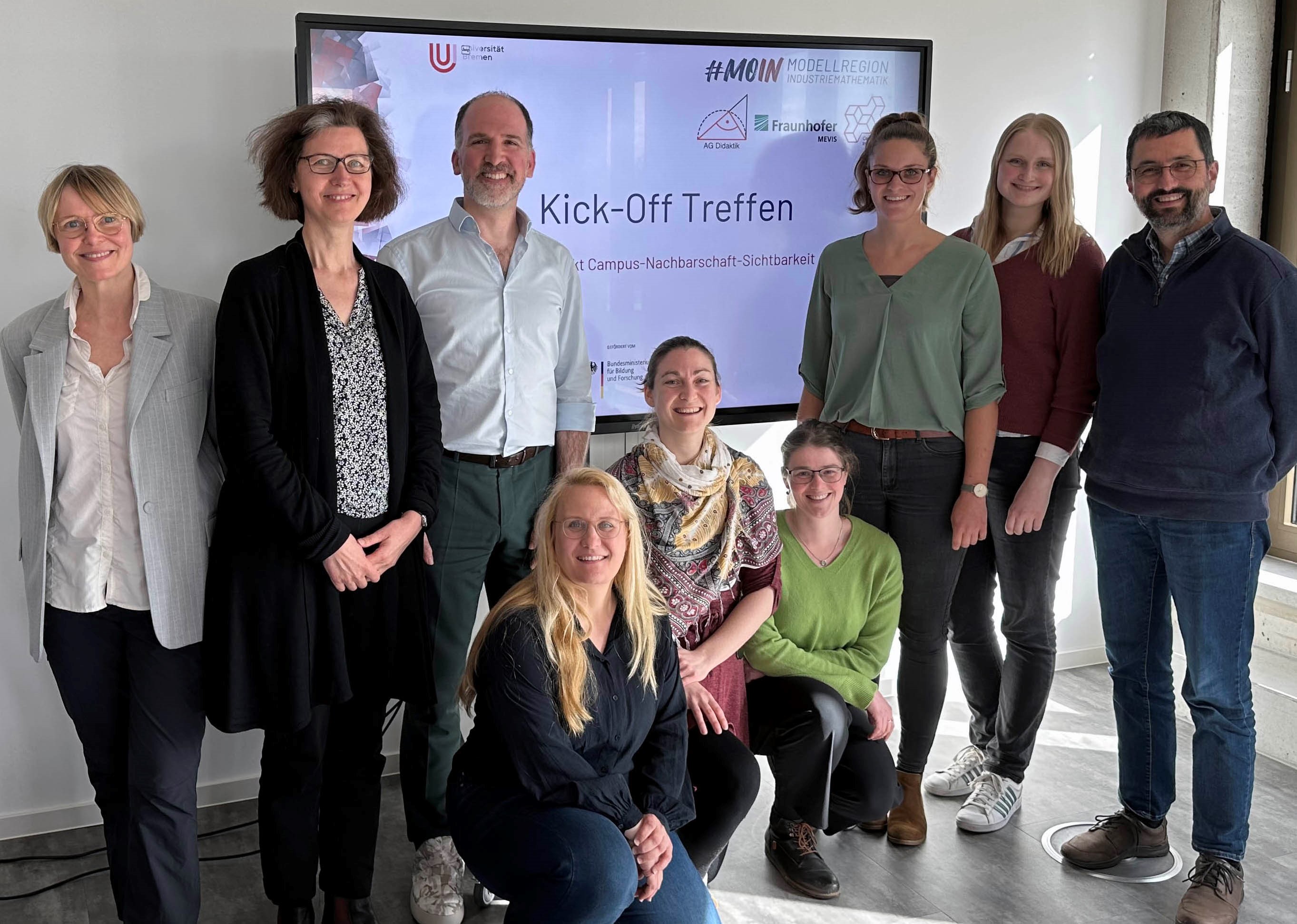Institute News
Industrial Mathematics for Intelligent Systems and the World of Tomorrow


Making the best possible use of mathematical results and giving society a better idea of the importance of mathematics for innovation and for our everyday lives—these are the goals of a sustainable model region for industrial mathematics (MOIN) in Bremen, Bremerhaven, and Osterholz county. The aim is to establish industrial mathematics as a driver of innovation in business and industry, to raise public awareness of industrial mathematics, and to make mathematics attractive again in schools. The #MOIN Campus–Nachbarschaft–Sichtbarkeit (which translates as #MOIN Campus-Neighbourhood-Visibility) sub-project aims to improve the reputation of mathematics among the public and to communicate the benefits of mathematics to young people and their teachers in particular. Activities take place on campus and in the neighbourhood, as well as at the young people’s schools. The Federal Ministry of Research and Education (BMBF) is funding the 36-month #MOIN Campus–Nachbarschaft–Sichtbarkeit sub-project with around 690,000 euros, while the corresponding activities of Fraunhofer MEVIS are being funded with a share of 100,000 euro.
On 18 April 2024 participants from the project management organization Jülich, the University of Bremen—the Faculty 3 Mathematics and Computer Science, AG Mathematics-Didactic Education Research (AGMU) headed by Prof. Dr Christine Knipping and the Centre for Industrial Mathematics, AG Optimization and Optimal Control (O2C) and Dr. Matthias Knauer—and scientists from the R&D Engagement team at the Fraunhofer Institute for Digital Medicine MEVIS met for the kick-off meeting in the so-called "Maschinenraum" at the NEOS building in the Technology Park at the University of Bremen.
In addition to the presentation of the single projects, as well as an overview of milestones and interim goals, an exchange on media visibility, and background information on the accompanying research, there was a lively strategy discussion on goals, synergies, and contacts.
The participants want to highlight the diverse manifestations of mathematics in everyday life in the neighborhood and draw attention to the rapidly changing mathematical and industrial applications there. On the campus, young people will experience mathematics in class groups on research days and in learning workshops. Here, they can explore exciting technical innovations and become curious about STEM subjects. City rallies make mathematics and its diverse applications visible at various locations in the region. Participants can also experience mathematics and its industrial benefits at company locations. In lively dialogue with schools, action days are being worked out, and materials are being developed for teachers to use in their lessons.
In the neighborhood workshop area, Fraunhofer MEVIS will introduce the cross-sectional topic of “digital medicine” into school lessons, with a focus on expanding industrial mathematics teaching-learning modules (worksheets, self-learning instructions, and software tools) for practice-oriented mathematics lessons to expand cooperation with mathematics teachers at the school. In addition, interdisciplinary points of contact at the interface between industrial mathematics and digital medicine are being further developed with teachers from the upper secondary school at Oberschule am Waller Ring (formerly part of the Walle school centre). The industrial mathematics modules and demonstrators on current research and development topics in digital medicine will also be used in other activities. The creation of the modules and demonstrators will also be closely linked to the research topics being worked on as part of #MOIN. One example of this is the Fraunhofer “FingerKIt” project involving Fraunhofer MEVIS, which focuses on the remobilization of finger joints using AI-based reconstruction and the generation of patient-specific ceramic implants. The work within the framework of #MOIN is being carried out at Fraunhofer MEVIS by a team of industrial mathematicians and science communicators.
As parents are still one of the most important influencing factors when it comes to choosing a field of study, MEVIS scientists want to organize themed evenings for families and friends on current health topics at school and at MEVIS under the motto “Many paths into medicine and research” with a focus on industrial mathematics and digital medicine. The topics, jointly prepared with the school students and teachers, form the core of the events and serve as a framework for a dialogue between MEVIS scientists, other stakeholders such as artists, and the participants. These measures are intended to reach not only young people, but also their families and other social actors.
Links
#MOIN-Campus-Nachbarschaft–Sichtbarkeit
R&D Engagement and Science Communication
 Fraunhofer Institute for Digital Medicine MEVIS
Fraunhofer Institute for Digital Medicine MEVIS